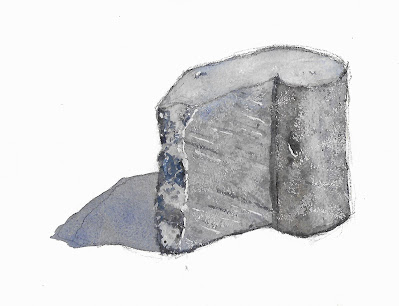 |
Woodchester Park Boathouse
Drawing Games - Drawing and Painting the Landscape
Charcoal Pencil on Paper
30.5cm x 21.5cm (12" x 8.5") |
This is the second instalment of my drawings from Lesson 22 of
Drawing and Painting the Landscape by
Philip Tyler..
The “game” for these drawings was inspired by a lesson from John Lovett about Drawing, Sketching and Scribbling.
For this game, I used a charcoal pencil - a medium I do not normally use. I held the pencil further back from the point than usual and as though I had just picked it up from the desk - rather than using the normal tripod writing grip. These changes allow you to make more fluid marks by drawing from the shoulder instead of the wrist and to easily switch between using the very tip of the pencil and the side of the lead. The new grip initially felt clumsy, but John’s premise is that confidence and conviction are more important than accuracy.
One of the most important aspects of drawing is confidence. Make your marks with conviction and don't be too concerned with accuracy. It is much better to have a clean, confident mark in the wrong place than a timid, overworked line in the right place.
The picture at the top of the post is the boathouse in Woodchester park. I think it featured in some episodes of the Crown as the boathouse at Gordonstoun, but I can’t say for sure.
 |
Winery Barns
Drawing Games - Drawing and Painting the Landscape
Charcoal Pencil on Paper
30.5cm x 21.5cm (12" x 8.5") |
These are some barns at one of the wineries in Niagara on the Lake. I think it was Iniskillin, but I took the photo in 2011, so I can’t be sure about this either.
 |
Digger Graveyard
Drawing Games - Drawing and Painting the Landscape
Charcoal Pencil on Paper
30.5cm x 21.5cm (12" x 8.5") |
There is a digger graveyard in our local woods. These are the two latest arrivals. They seem much younger than the other residents. I was hoping they were just on holiday, but things were looking bleak because they hadn’t moved for weeks. Even Doris seemed worried about them. They just sat there slowly seizing up and rusting. Until yesterday. They’ve started to do some digging and it looks like they are trying to tidy the place up a bit. Happy Days.









































